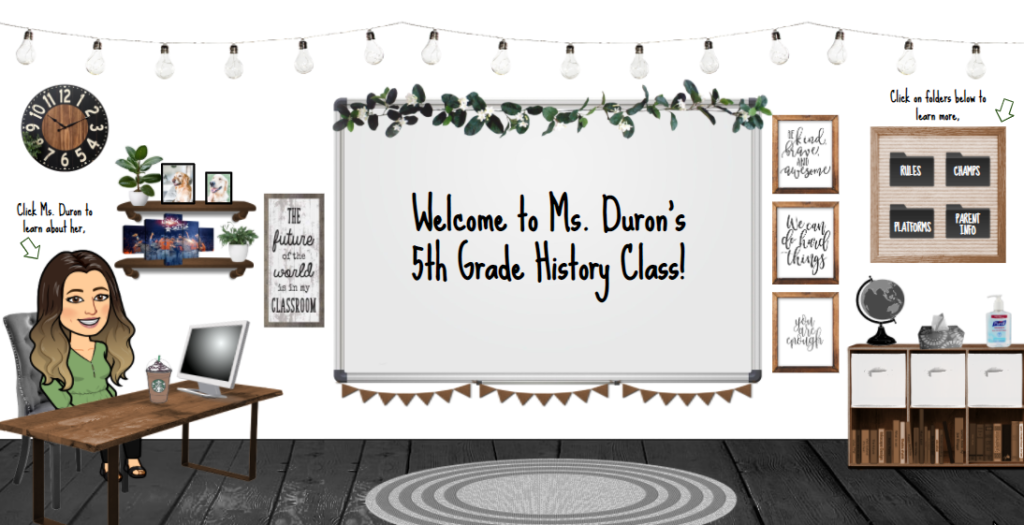Hey, Struggling Teachers–Here’s how you come back from a rough first semester

By Allyson Burnett
When asked, most teachers say that their first year of teaching was the toughest. They talked about the challenge of teaching to the state standards, writing engaging lesson plans, dealing successfully with parents, figuring out effective classroom management techniques, and lately, the challenges of “blended” instruction, student attendance, and finding ways to engage students in Zoom or Google Meets..
So, if you (or someone you know) had a rough first semester, here are 3 specific actions to take to have a better second semester.
Find Yoda and ask for help
Most districts assign new teachers a mentor. The pairing may be made based on what grade or subject is taught. But even with the best intentions, the official mentor isn’t always a good fit for the new or struggling teacher. If that is true in your situation, what can you do? Find Yoda!

Ask an administrator or counselor: Who on the faculty is wisest? Who is calmest? Who is best with kids or most admired by peers? That’s Yoda! Once you have identified Yoda—reach out and ask for two specific types of help. First, will “Yoda” allow you to observe his/her class. Not meeting in person at your school? Ask Yoda to share the recording links of a couple of classes with you and watch them. Next, will this “unofficial mentor” observe your classroom (or watch recordings you have made of your class) and then meet with you to perform a type of educational “triage”? In other words, help you in identifying what to attend to first to make the biggest difference? Why is that important? You have to stop trying to focus on changing everything you have been told to “fix” and start to focus on finding the difference that will make the difference.
Take our free course “Instructional Coaching and Video” for more high-impact strategies
Focus on Relationships and Rules
What typically makes the biggest impact on turning a struggling teacher into one who thrives? Focusing on the 2 R’s—relationships and rules.
By the end of the first semester, a struggling teacher has usually received a lot of advice from helpful and concerned colleagues—much of which has no basis in research or best practices. What is research-based is the importance of developing relationships with students. This doesn’t mean that you are their friend. Rather, it means that you build rapport, and you show you care about each one of them. One idea that stands out in Robert Marzano’s Classroom Management that Works is this:
“Virtually anything you do to show interest in students as individuals has a positive impact on their learning.”
What are some concrete ways to show interest?
Meeting in person?
- Greet students at the door
- Find 5-10 seconds to have brief and positive conversations with different students each day
- Have classes complete interest surveys
- Go to their band concerts and sporting events to support your students
- Write personalized notes to each student numerous times throughout the year
Meeting virtually?
- Greet students warmly by name as they enter Zoom
- Use “ice-breakers” to get to know your students & engage them
- Share private, positive chats throughout class
- Send personalized emails to each student throughout the year
- Maintain a positive, safe on-line environment
In addition to relationships, the new semester is the perfect time to review your rules from the first semester.
Are they few in number?
Are they positively stated?
Are they enforceable—and are you willing to enforce them consistently?
If followed, will they let you teach and students learn? Most successful classroom management rules let students know one of the following:
Meeting in person?
- How to enter the class and where to sit
- How to participate/respond/speak out
- How to request permission
- How to leave the room
- What they are and are not allowed to have (food, water, cell phones, etc.)
Meeting virtually?
- What tasks to do as they enter Zoom/Google Meets
- How to participate/respond/speak out
- How to request permission
- What to do if they need to leave the “room”
Read more about how teachers in West Grand School District used Restorative Practices to improve on relationships and rules
Do your homework
To stop struggling and start thriving, add to your toolkit by doing some homework! The three most important resources that I have ever shared with new and struggling teachers are Doug Lemov’s Teach Like a Champion 2.0, Lemov’s Teaching in the Online Classroom—Surviving and Thriving in the New Normal, and the Kagan strategies for Cooperative Learning Structures.
What I like best about Doug Lemov’s Teach like a Champion 2.0 isn’t actually the book. It is the DVD and/or virtual access we are given to over 60 videos when we purchase the books. Each of the 1-2 minute clips we watch helps to show us “how” to improve our classroom procedures, questioning techniques, student engagement, and overall instruction. These clips are of real teachers who have been filmed in their own classrooms with their own students successfully using Lemov’s techniques. The same is true on his Online Classroom book. If struggling teachers spent 1-2 hours watching the clips, it would give them the tools they need to survive and thrive in the second semester.
Be a Champion today, read our blog post on the smart way to do your homework
The second resource is available to be purchased online at the Kagan website (http://www.kaganonline.com/). It is a laminated 4-page resource of various structures for having students working cooperatively. These structures add engagement, rehearsal, and processing time to the work we are asking students to do. Every teacher should know and use 3-4 of these structures as a matter of course every week. Most of these structures will work well in break-out-rooms.
“Recalculating!”
I used to travel using one of the old navigation devices that would stick to your car windshield. When I would take a wrong turn, I would hear the sometimes alarming and emphatically spoken word “recalculating!”

A sense of relief always followed that sense of dread as I realized that my error had been quickly caught, and I was about to be given a new course to follow to get me headed in the right direction.
So, what do Garmin Navigators have to do with struggling teachers? If you had a rough first semester, you probably took a wrong turn or two. Without a navigator, you just didn’t recognize it right away. Without a navigator, you didn’t know how to get back on course, either. Now, though, you have recognized that you were on the wrong road and it is time to “recalculate.”
You now have 3 actions to take—a new course to follow. Make it a priority to get started so you can head in the right direction. The sooner the better!
Allyson Burnett is currently an author and adjunct professor with over 30 years of teaching experience in Houston area public schools. Her passion is coaching new and struggling teachers.


